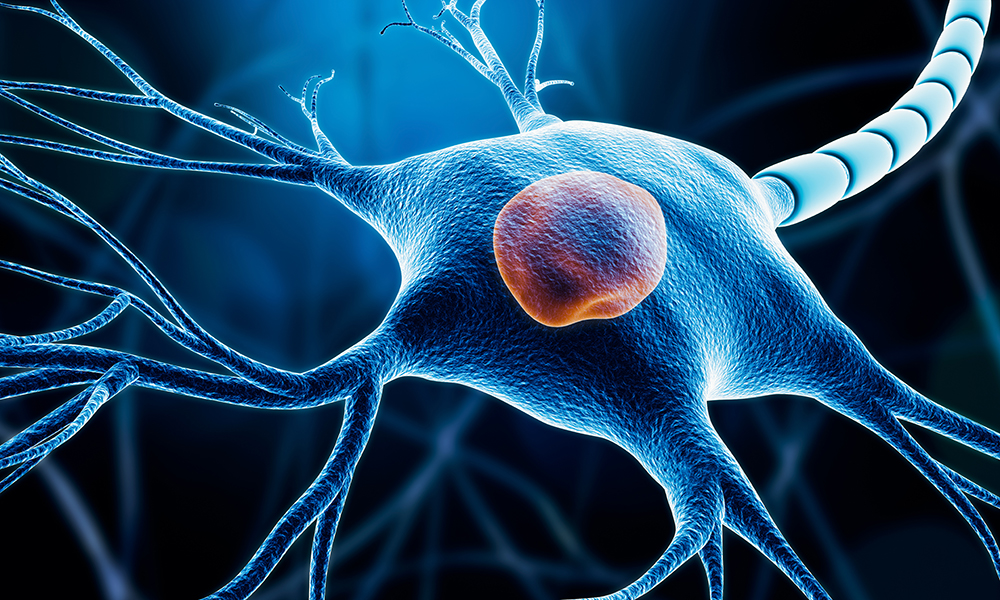
From stem cells to neurons
EMBL scientists investigate at four different molecular levels how embryonic stem cells become mature nerve cells

Scientists at EMBL Heidelberg have investigated stem cells – the earliest type of cells in an organism, which can divide indefinitely and change into all other types of cells – and how they change, or differentiate, to become neurons. Their approach included an assessment of the complex interplay of molecules during the differentiation process and generated fundamental new insights into the role of a protein called Sox2 in neurons.
The researchers observed the cell differentiation process in mouse stem cells over 12 days and four defined stages as they became developed neurons. During these stages, they generated four types of data in a multi-omic approach.
The bigger picture
A multi-omic approach is best described as the combination of several omics disciplines. For example, proteomics refers to the study of proteins, transcriptomics is about assessing gene expression in a cell by measuring RNA levels, and genomics studies the structure and function of the cell’s genetic material. A multi-omic analysis generates huge and complex datasets that can give fundamental insights into a biological system.
During all four stages of cellular differentiation, the researchers generated data on different molecular levels. The first was on chromatin accessibility – how loosely or tightly wound the DNA–protein complex is, which makes it more or less likely that genes will be expressed. The other molecular layers they examined were gene expression, protein expression, and the activity of transcription factors – proteins that bind to specific DNA sites and regulate the expression of genes.
“By using a multi-omic approach during four stages of the complex process of cellular differentiation, we got more than just a mere sum of these layers,” says Daria Bunina, an EMBL Interdisciplinary Postdoc (EIPOD) in the Zaugg and Noh groups at EMBL Heidelberg, who led the collaborative study between the two groups jointly with Nade Abazova, a PhD student in the group of EMBL alumnus Jeroen Krijgsveld at DKFZ. “We could study the relationships between different layers during the same stage of differentiation, as well as the relationship between the four stages of differentiation as a whole. That was the main strength of our study.”
Every molecular layer seemed to dominate a different step of the differentiation process. “At the beginning, when the cell started to differentiate and lost its stemness, this was the time when there were the largest changes in chromatin accessibility. In the final stage of the process, however, the largest changes were in gene expression,” says Daria. This highlights the importance of the multi-omic approach in gaining a complete picture of the process.
Switching partners
Although the study wasn’t designed to investigate a specific hypothesis, it generated fundamental new insights into a transcription factor called Sox2. Daria explains that Sox2 is primarily known for its role in stem cells, where it keeps them in their stem state and blocks them from spontaneous differentiation. The researchers discovered that, once the neuronal cells reached the final stage in which they couldn’t divide any further, Sox2 changed its interaction network and took on completely different tasks. The role of transcription factors is strongly based on their interactions with each other. Changing their interaction partner to another transcription factor can lead to them having entirely different functions, which has recently been studied by the Zaugg group. In mature neuronal cells, Sox2 interacts with a chromatin remodelling factor called Atrx.
This interaction was confirmed by using the gene editing tool CRISPR–Cas9. The researchers deleted several DNA regions to which the Sox2–Atrx complex usually binds. They then saw that the expression of nearby genes decreased. “From this, we can conclude that Sox2’s switching of its interaction partners allows it to regulate a completely different set of genes in neurons,” says Daria.
The study provides a valuable resource for other scientists, because it generated various large omics datasets. These can be used to investigate specific genes or proteins. The study also shows that a multi-omic approach in a hypothesis-free study can generate interesting biological insights that are not obvious if only one process in the cell is observed. “It shows that you don’t always need to have a clear biological question to start with. You can generate interesting hypotheses by exploring complex multidimensional data, and then follow them up analytically and experimentally,” says group leader Judith Zaugg.
Showing the right direction
Fellow EMBL group leader Kyung-Min Noh explains that multi-omic approaches are often attempted, but it is very difficult to obtain a meaningful outcome from the large amount of data they generate. “This study clearly shows the right direction to go in when you’re confronted with large, entangled datasets,” she says.
Judith regularly organises conferences about challenges and opportunities of multi-omics data integration and knows that many scientists in different fields struggle with the interpretation of their multidimensional data. “There is an exponential increase in multi-omics studies, but when you look at them and check how many actually gain some sort of mechanistic insight, it’s a small percentage that isn’t increasing much yet,” she says. “I think this study is a really important push for the field to go beyond multi-omics and data correlations and try to gain more insights into the underlying biological mechanisms.”
Both group leaders agree that the study highlights the strengths of an interdisciplinary programme like EMBL’s EIPOD programme, during which postdocs can work in various research groups and benefit from training in the multiple disciplines in which scientists are working at EMBL. “Daria took all the input that was available from our two labs and put it together,” says Judith. “This is a perfect example of what the EIPOD programme is made for.”


